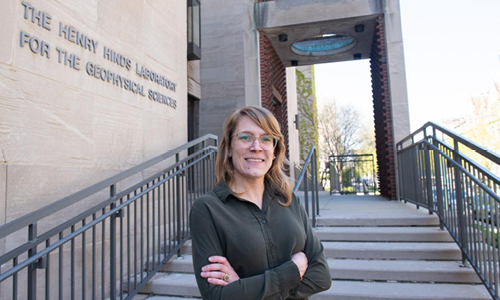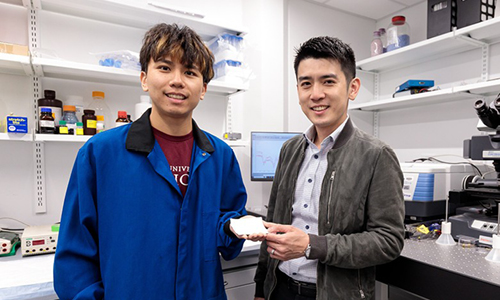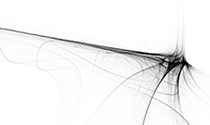|
|
|
|
|
|
| |
Summer storms and heat waves have been growing deadlier in recent years, and UChicago climate scientists are trying to understand why. In this issue of µChicago, explore current research into climate change and weather shifts as well as new technologies that could mitigate their devastating effects. |
|
| |
|
|
|
| |
From pilot to pioneer in atmospheric science |
|
| |
|
|
|
|
|
| |
| |
|
|
| |
UChicago geophysical sciences professor Tiffany Shaw seeks to understand the physics of atmospheric circulation. Photography by Jean Lachat. |
|
| |
|
|
|
|
| |
|
|
|
| |
Tiffany Shaw’s climate science career began with her head in the clouds. Piloting planes with her family as a teenager, Shaw witnessed Earth’s atmosphere up close, which sparked her fascination with the physics behind our planet’s climate. Today, as a UChicago professor of geophysical sciences, Shaw investigates the critical role of water and clouds in climate dynamics. Her previous studies on hemispheric storm patterns and jet stream shifts produced new insights into the impacts of climate change. Shaw is currently leading a project with the National Atmospheric and Oceanic Administration to analyze the climate models themselves, evaluating their accuracy and adjusting them to improve predictions of climate-caused weather events. |
|
| |
|
|
|
|
|
| |
Past climate clues and future fears |
|
| |
|
|
|
| |
|
|
|
| Balancing act: Earth’s climate has remained stable and habitable for billions of years through a delicate balance of biogeochemical cycles, according to a study that used mathematical tools to uncover the interplay of elemental movement. |
|
|
|
| |
|
|
|
|
|
| |
|
|
|
| On thin ice: For the first time, scientists have observed flexing and fracturing in Antarctic ice shelves due to the formation of meltwater ponds. The phenomenon raises alarms about accelerating ice shelf collapse and rising sea levels. |
|
|
|
| |
|
|
|
|
|
| |
|
|
|
| Rocking the boat: Can past geological changes predict future climate shifts? Scientists aboard the ship JOIDES Resolution are drilling deep into the rocky seafloor to uncover millions’-year-old secrets of Earth’s climate history. |
|
|
|
| |
|
|
|
|
|
| |
A spectrally selective solution |
|
| |
|
|
|
|
|
| |
| |
|
|
| |
PhD candidate Chenxi Sui (left) and assistant professor Po-Chun Hsu from the Pritzker School of Molecular Engineering show off a textile that reflects both direct sunlight and thermal radiation in urban heat islands. Photography by John Zich. |
|
| |
|
|
|
|
| |
|
|
|
| |
A research team from the Pritzker School of Molecular Engineering has developed a revolutionary cooling fabric designed to mitigate the impact of extreme heat. Tested under the scorching Arizona sun and in the urban heat islands of Chicago, the fabric kept wearers measurably cooler than the sportswear fabrics commonly used in summer clothing. The fabric addresses a critical gap in existing cooling technologies, explains PME researcher Ronghui Wu. Rather than reflecting solar radiation alone, the material also counters thermal radiation emitted from surrounding pavement and buildings, and it may have applications in clothing, architecture, and even food storage. |
|
| |
|
|
|
| |
Listen to geophysical sciences professor Noboru Nakamura discuss the science behind heat waves in a July 2022 episode of the Big Brains podcast. |
|
| |
|
|
|
|
|
|
|
|
|
|
|
|
|
| |
| |
Sign up to receive µChicago monthly. |
|
|
|
| |
|
|
|
|





